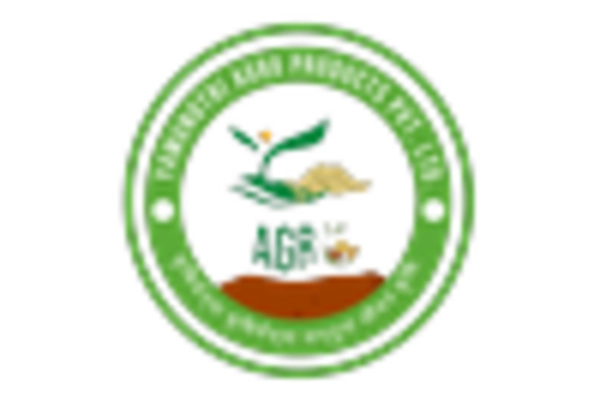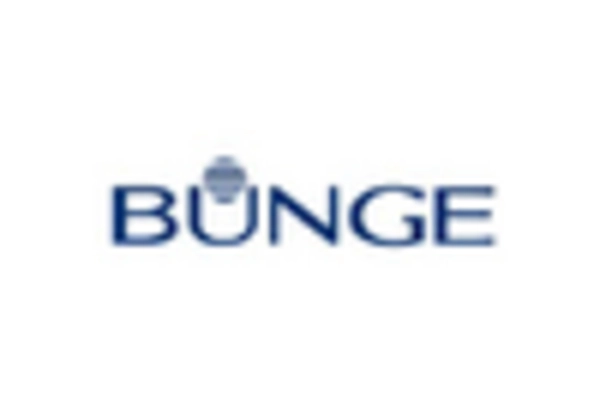Nutritional Benefits of Pulse Flour
The nutritional profile of pulse flour significantly contributes to its rising popularity within the Pulse Flour Market. Rich in protein, fiber, and essential vitamins, pulse flour offers a healthier alternative to conventional flours. For instance, chickpea flour contains about 22 grams of protein per 100 grams, making it an attractive option for health-conscious consumers. The growing trend towards plant-based diets also enhances the appeal of pulse flour, as it aligns with the nutritional needs of vegetarians and vegans. Market data suggests that the demand for high-protein flour alternatives is expected to increase, with pulse flour being a frontrunner in this category. As consumers seek to enhance their diets with nutrient-dense ingredients, the Pulse Flour Market stands to benefit from this shift towards healthier eating habits.
Versatility in Culinary Applications
The versatility of pulse flour in various culinary applications is a key driver for the Pulse Flour Market. It can be utilized in a wide range of products, including baked goods, pasta, and snacks, appealing to diverse consumer preferences. This adaptability allows manufacturers to innovate and create new products that cater to different dietary needs and culinary trends. For example, pulse flour can be used to make gluten-free pancakes, protein-rich bread, and nutritious energy bars. Market data suggests that the demand for innovative food products is on the rise, with consumers seeking unique flavors and textures. As the Pulse Flour Market continues to explore new applications, it is likely to see sustained growth and increased consumer interest.
Growing Interest in Plant-Based Diets
The Pulse Flour Market is significantly impacted by the growing interest in plant-based diets. As more individuals adopt vegetarian and vegan lifestyles, the demand for plant-based ingredients, including pulse flour, is on the rise. Pulse flour serves as a valuable source of protein and essential nutrients, making it an ideal choice for those seeking to reduce their meat consumption. Market data indicates that the plant-based food market is expected to expand rapidly, with consumers increasingly looking for alternatives that align with their dietary choices. This trend not only supports the growth of the Pulse Flour Market but also encourages innovation in product development, as manufacturers strive to meet the evolving preferences of health-conscious consumers.
Rising Demand for Gluten-Free Products
The Pulse Flour Market experiences a notable increase in demand for gluten-free products. As consumers become more health-conscious, the preference for gluten-free alternatives has surged. Pulse flour, derived from legumes such as chickpeas and lentils, serves as an excellent substitute for traditional wheat flour. This shift is reflected in market data, indicating that the gluten-free segment is projected to grow at a compound annual growth rate of approximately 9% over the next five years. The Pulse Flour Market is thus well-positioned to capitalize on this trend, as it offers nutritious and versatile options for gluten-sensitive individuals. Furthermore, the increasing awareness of celiac disease and gluten intolerance among consumers further propels the demand for pulse flour, making it a key player in the gluten-free market.
Increased Awareness of Sustainable Agriculture
The Pulse Flour Market is positively influenced by the increasing awareness of sustainable agricultural practices. Pulses are known for their low environmental impact, requiring less water and fertilizer compared to traditional crops. This sustainability aspect resonates with environmentally conscious consumers, driving demand for pulse flour products. Market data indicates that the sustainable food market is projected to grow significantly, with consumers willing to pay a premium for products that align with their values. As the Pulse Flour Market embraces sustainable sourcing and production methods, it is likely to attract a broader customer base. This trend not only supports environmental goals but also enhances the marketability of pulse flour as a responsible choice for consumers.


















Leave a Comment